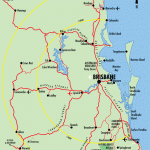It’s one of the most iconic vehicles to ever drive our shores, and for decades has been the benchmark from which all 4WD utes are measured.
But what about now? How does Australia’s most loved Toyota fare amid a slew of competitors encroaching on the niche that they created, with serious offerings from Isuzu, Nissan, Ford, Mitsubishi, Mazda and Volkswagen?
We figured the only way to put the new Hilux to the test was with a trip to Moreton Island A return to an El Nino weather pattern meant a return to a long and dry early summer, and everything we’d heard from our favourite island getaway was how divitted, rutted and chopped-up the tracks were. Optimum conditions to see if the Hilux could retain its mantle as top dog.
Even with numerous terrain reports we were still shocked when the MICAT barge dropped its drawbridge and we set forth across the island. What’s usually a pillowy glide through the forest was a rollercoaster of uneven scrapes that resembled a layer of hell from Dante’s Inferno.
On one surreal bend there were three vehicles bogged up to the axles, all of them spraying plumes of sand skyward from their back wheels like water from the back of jetskis.
Immediately, the Hilux fought fire with an ice cool temperament, steadily banking over the twisted corners, its cool 2.8L diesel engine metronomically ticking along.
When things got sketchy it would just maintain the speed, like a soothing conversation (the vehicle) with an hysterical lover (me).
Just when you thought you might end up sinking into a morass of grey clay and cake-mix, it would confidently kick in and buzz you over every pitfall and pratfall. The Hilux seemed to float through each hazard and float through whatever catastrophic thinking you may have had.
The single word that kept coming to mind was ‘confident’. It was confident in itself even at times when I wasn’t. Over and over, through difficult bunkers, through rising tides, through mottled quicksand, it got the job done without any hullabaloo, any loud whining, or any hysteria, it would just plow on.
And when you did think it was done for, it would just kick in again as though it always felt like it had plenty in reserve. The engine, although not huge, never felt like it wouldn’t have been capable of lugging around the 3.2 tonnes it’s supposed to be capable of towing.
On sand, the Hilux was a revelation. It was like trench warfare out there, but throughout all the mid-track mayhem, from the skipper’s seat it was always responsive and felt elevated from any wheel-side drama.
However, because we had three in the rig at all times, whoever was in the back seat was getting jerked around on sharp bends, while those of us in the front were on a comfy cloud, ignoring them.
It was surprising because the seating arrangement in the back was almost as spacious as the front, we put it down to the rear seats being a fraction higher.
How well did it go, overall? Well the above point might give you an idea. After three days of trying to pick holes at it, the bouncy backseat (albeit only in the craziest of bends) was about all we could come up with.
The only other potential detriment we found was the front fascia panel under the grill, although piercing to look at, it was constructed out of vulnerable fiberglass. Which was odd given the rest of the vehicle’s super weighty panels. This is kind of a moot point anyway, given that 99% of people will plonk a decent bulbar on the front anyway.
Moreton Island Map and Travel Guide Photo Gallery
Maybe You Like Them Too
- Explore Góra Kalwaria, Poland with this detailed map
- Explore Gumdag, Turkmenistan with this detailed map
- Explore Telfes im Stubai, Austria with this detailed map
- Explore Langenselbold, Germany with this detailed map
- Explore Krotoszyn, Poland with this detailed map










